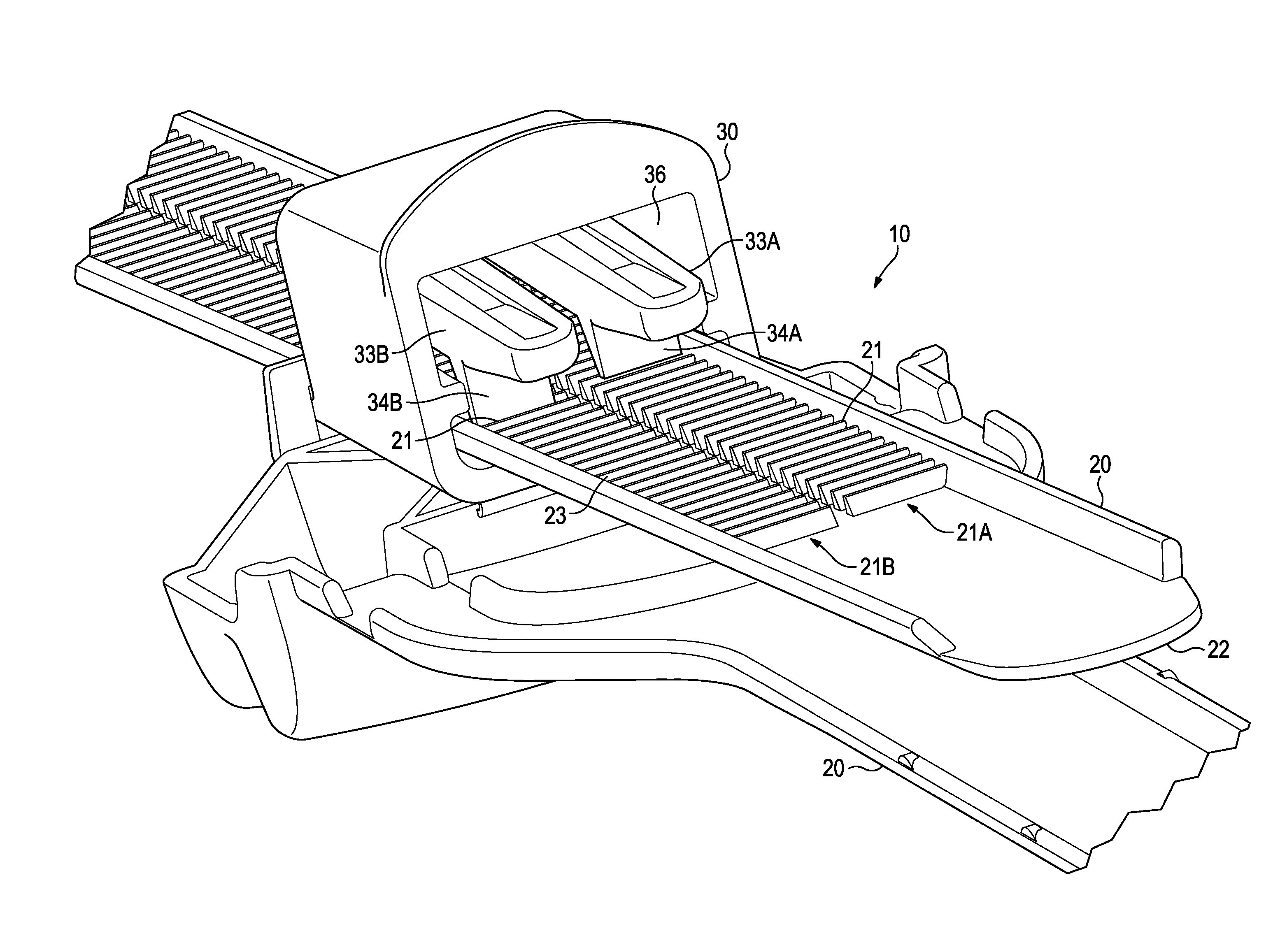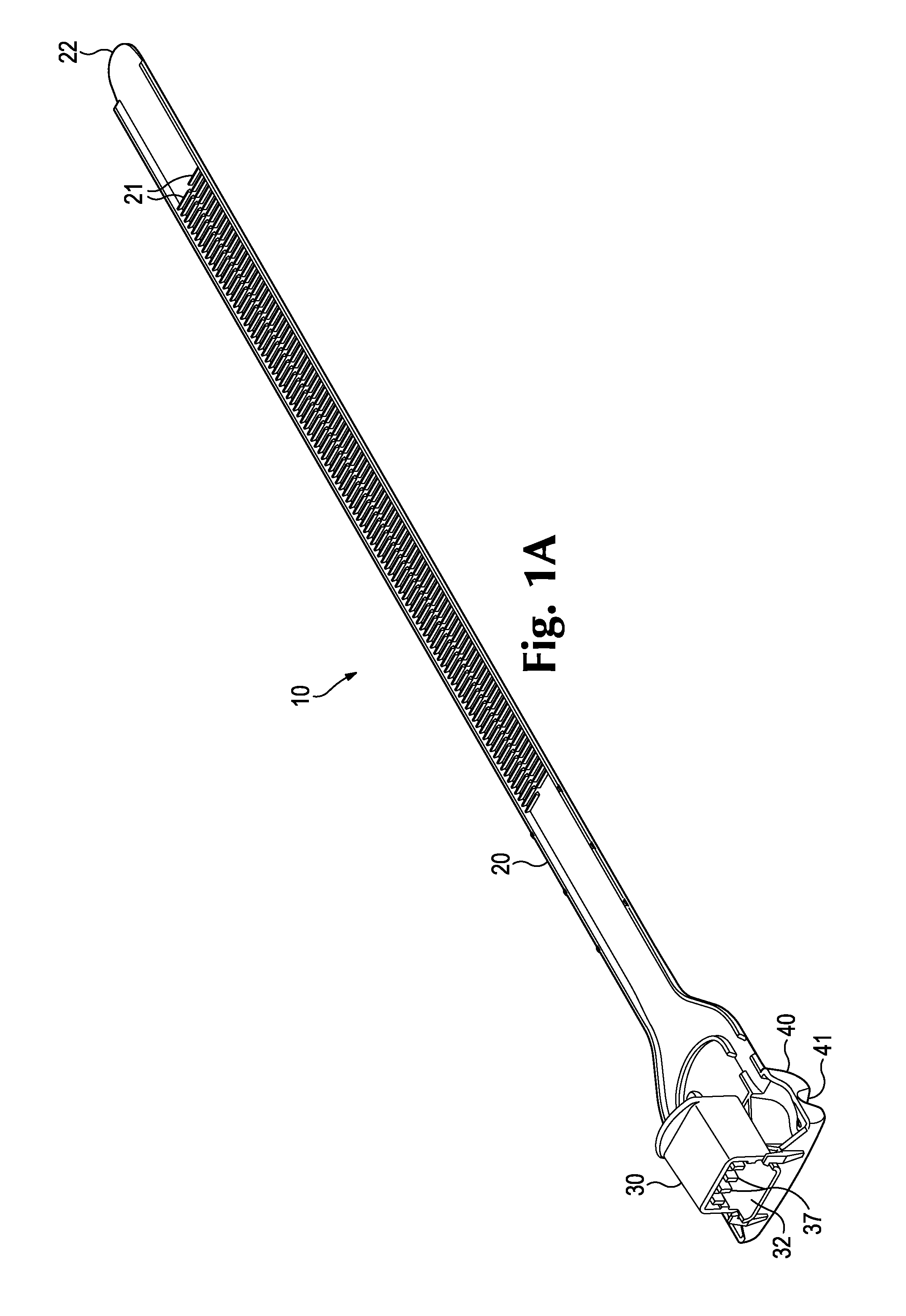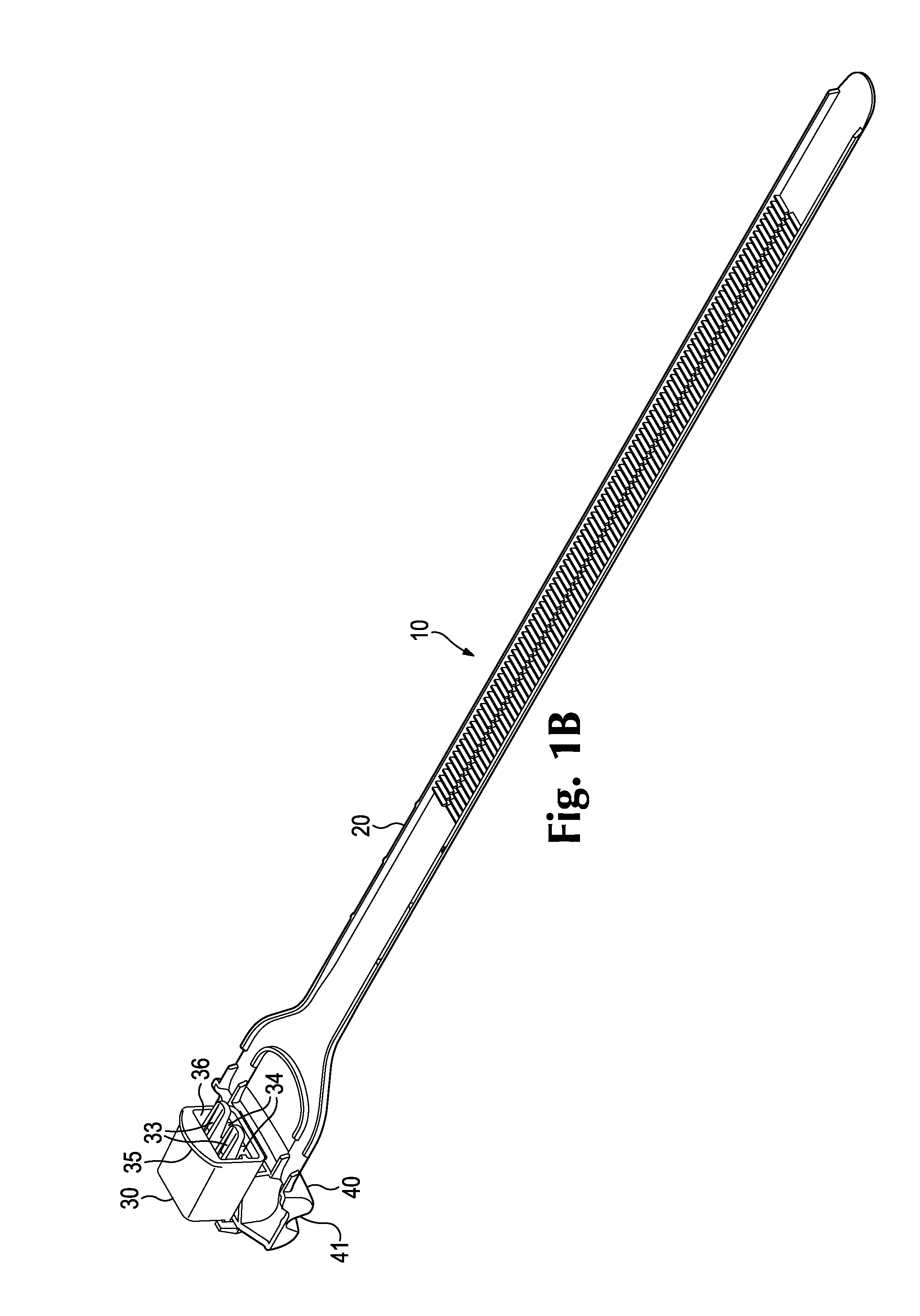Adjustable Ratcheting Vascular Compression Device and Method of Use
a ratcheting vascular and adjustable technology, applied in the field of adjustable ratcheting vascular compression devices and methods of use, can solve the problems of lack of integrated means of securing, adjusting and quickly releasing the device, and no device provides a convenient, low-cost, user-controlled, easily-adjustable means, etc., to reduce or stop blood flow, reduce or eliminate blood flow
- Summary
- Abstract
- Description
- Claims
- Application Information
AI Technical Summary
Benefits of technology
Problems solved by technology
Method used
Image
Examples
Embodiment Construction
[0035]An adjustable ratcheting vascular compression device 10, for use in assisting with post-procedure vascular hemostasis following catheterization or other cannulation, is shown in the drawings and Detailed Description included herein as a preferred embodiment of the present invention. Although the described embodiments are shown as a unitary construction, for example, a single injection-molded plastic part, it will be understood by those skilled in the art that alternative materials and means of construction to achieve the device's objectives and that other changes in form and detail may be employed without deviating from the present invention. In the drawings there are referenced two each of certain components, specifically: for the strap threads 21, the strap thread rows A and B, 21A and 21B respectively; for the levers 33, the levers A and B, 33A and 33B respectively; for the lever pawls 34, the lever pawls A and B, 34A and 34B respectively; for the lever hinges 37, the lever...
PUM
 Login to View More
Login to View More Abstract
Description
Claims
Application Information
 Login to View More
Login to View More - R&D
- Intellectual Property
- Life Sciences
- Materials
- Tech Scout
- Unparalleled Data Quality
- Higher Quality Content
- 60% Fewer Hallucinations
Browse by: Latest US Patents, China's latest patents, Technical Efficacy Thesaurus, Application Domain, Technology Topic, Popular Technical Reports.
© 2025 PatSnap. All rights reserved.Legal|Privacy policy|Modern Slavery Act Transparency Statement|Sitemap|About US| Contact US: help@patsnap.com



